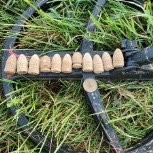Equinox Ferrous / Iron / Steel Responses
-
Similar Content
-
- 5 replies
- 367 views
-
Mf Machines On Mineralized Black Sand Salt Beach. Update 4/8 Legend, Manticore, Nox 900. 1 2 3 4 9
By midalake,
- 83 replies
- 9,665 views
-
- 3 replies
- 468 views
-
- 7 replies
- 691 views
-
- 10 replies
- 1,713 views
-
Target ID Chart Differences Between Equinox 600/800 And Equinox 700/900/manticore 1 2 3 4 5
By phrunt,
- 44 replies
- 7,687 views
-
-


.thumb.jpg.ac5e8ee36e43bcab745dbc623fcf1874.jpg)






Recommended Posts
Create an account or sign in to comment
You need to be a member in order to leave a comment
Create an account
Sign up for a new account in our community. It's easy!
Register a new accountSign in
Already have an account? Sign in here.
Sign In Now